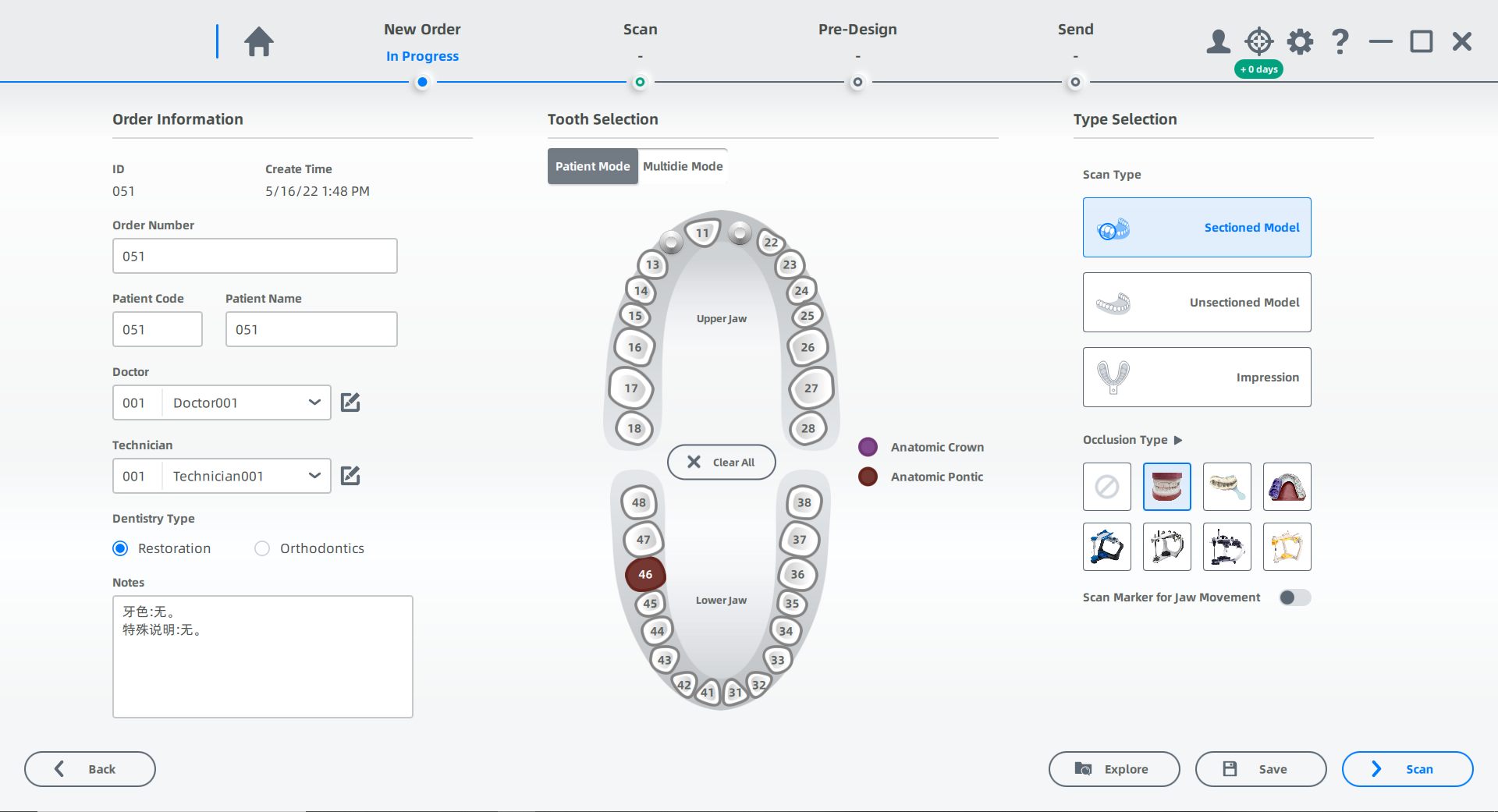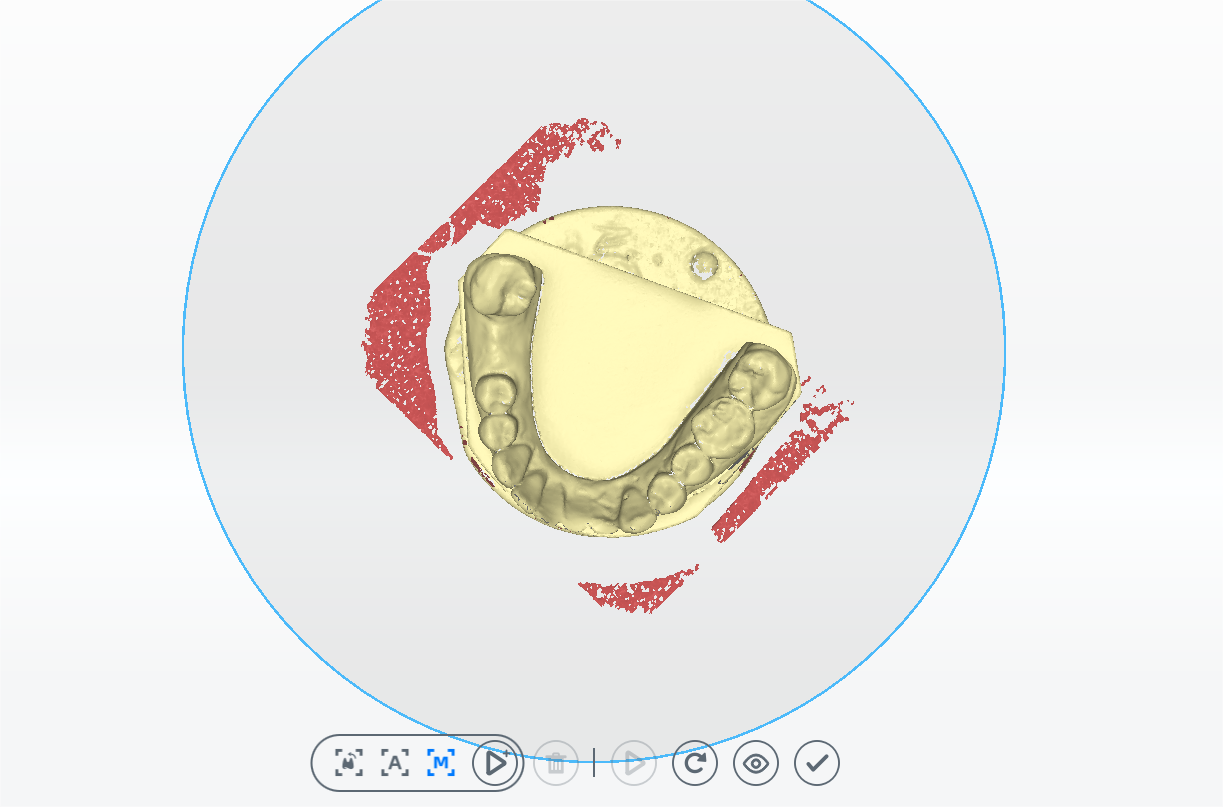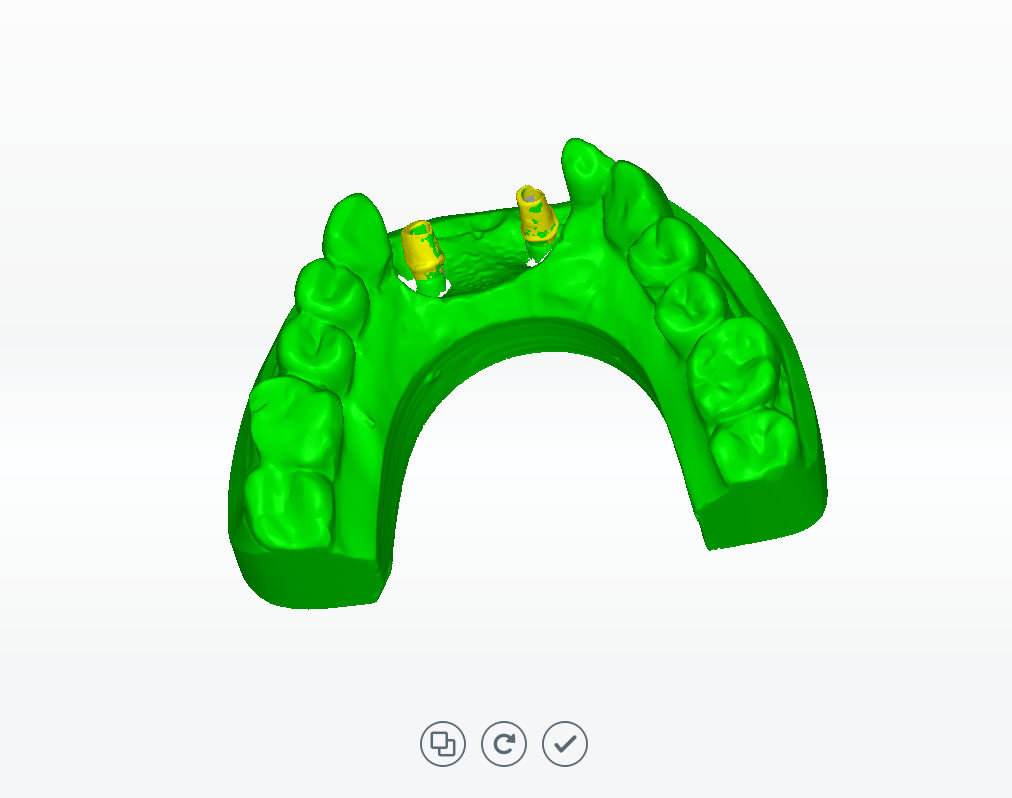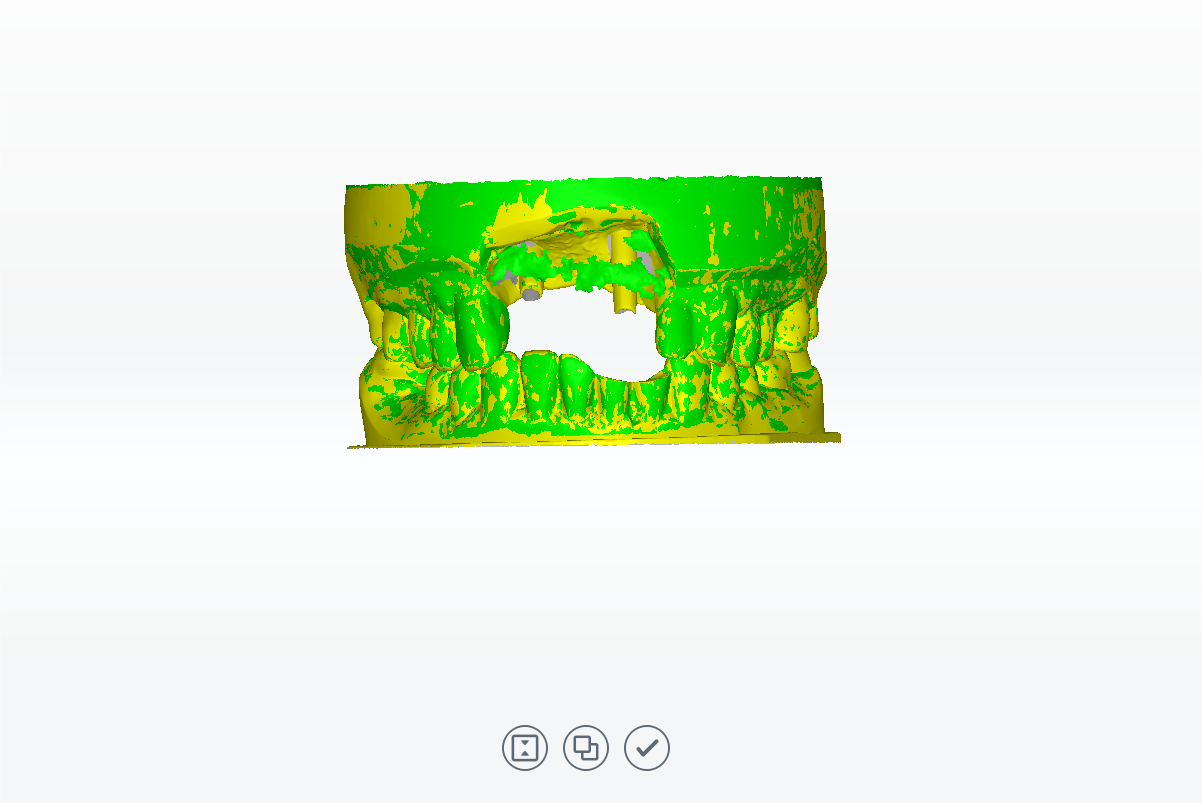Implant-based (Abutment) Case¶
For Abutment orders, two scanning types can be selected: Sectioned Model and Unsectioned Model. When selecting the Unsectioned Model scanning type, it is recommended to add additional die scanning steps to scan.
Create the Order¶
Note
- Select Restoration as the dentistry type.
- Select Patient Mode.
- Click Custom Abutment(manual positioning) or Screw Retained(manual positioning) in Implant-Based.
- Select Sectioned Model or Unsectioned Model.
- Select Occlusion Type according to the reality.
More details can be found in Scan Strategy Configuration.
Click Scan to start or click Save to save the order and scan it later.

Start Scanning¶
 Total Jaw Scan¶
Total Jaw Scan¶
- Follow the guidance on the interface to place the height adaptor, the fixture and the model.
- Set the configuration in the camera window. For steps to set the configuration, see Parameters.
-
(Optional) Turn on additional functions. For more, see Function.
-
Click
or press Space / Enter to start scanning.
-
After scanning, move or rotate the cutting plane to cut the model.
-
Click
to edit the model. For more, see Function.
-
Click
to save the edit and return to the scanning interface.
- Click
to preview the scanned model; or click
to rescan; or click
to finish.

 Lower Jaw Scan¶
Lower Jaw Scan¶
- Click
or press Space / Enter to start scanning.
- If the scanned data is incomplete, click
to add more data to the existing scan.
- After finishing, cut and edit the scanned data for a cleaner scan.
-
Click
to finish.

 Upper Jaw Gingiva Scan¶
Upper Jaw Gingiva Scan¶
-
Click
or press Space / Enter to start scanning.
Note
: Improve the integrity of scanned data. This function is enabled by default when scanning gingiva.
-
If the scanned data is incomplete, click
to add more data to the existing scan. For steps to add scan, see Function.
- After scanning, cut and edit the scanned data according to reality.
-
click
to finish.

 Upper Jaw Scan¶
Upper Jaw Scan¶
-
Click
or press Space / Enter to start scanning.
Note
:When scanning reflective objects such as abbutment and scanbodies, it is recommended to enable it to improve the scanning quality.
-
If the scanned data is incomplete, click
to add more data to the existing scan.
- After scanning, cut and edit the scanned data according to reality.
- Click
to finish.
 Upper Jaw Gingiva Alignment¶
Upper Jaw Gingiva Alignment¶
- Check the automatic alignment.
- (Optional) If the result is not optimal, click
and align the scanned data manually. For steps to align, see Alignment Operation.
Col

Automatic Alignment
Col

Manual Alignment
 Die Scan - Upper Jaw¶
Die Scan - Upper Jaw¶
Note
For unsectioned orders, it is recommended to click on the step bar to add the Die Scan - Upper Jaw/Lower Jaw scan step.
- Follow the guidance on the interface to place the model.
-
Adjust the brightness and the cutting height in the camera window.
-
Click
or press Space / Enter to start scanning.
Note
: enable by default to acquire abutment data.
-
If the scanned data is incomplete, click
to add more data to the existing scan.
- After scanning, cut and edit the scanned data for a cleaner scan.
- Click
to check the effect. Or click
to finish.

 Die Alignment - Upper Jaw¶
Die Alignment - Upper Jaw¶
- Check the automatic alignment and click
to finish.
- (Optional) If the result is not optimal, click
and align the scanned data manually. For steps to align, see Alignment Operation.
Col

Automatic Alignment
Col

Manual Alignment
 Occlusion Alignment¶
Occlusion Alignment¶
- Check the automatic alignment and click
to finish.
-
(Optional) If the result is not optimal, click
and align the scanned data manually. For steps to align, see Alignment Operation.

Finish Scanning¶
After finishing the scanning process, click on Go to Pre-design to edit the scanned data.